Great information Jim, do you know that date of the display?
You are using an out of date browser. It may not display this or other websites correctly.
You should upgrade or use an alternative browser.
You should upgrade or use an alternative browser.
Ever ready model numbers -- post your numbers here
- Thread starter SavantStrike
- Start date
Nothing for sure but it's my opinion that its in the code at the lower right of the label: "56-15-33".
1956?
1956?
Great information Jim, do you know that date of the display?
These would be the bulk dealer prices when buying by the dozen. It's very good for seeing the relative value between the brushes but difficult to tell the retail selling price unless you apply a x-factor assumed markup. I love these ads by the way. Great snapshot into their history.
I think it may be older, here is a 1950 ad...
That image is not very good, I will see if I can find the original.
Do you think that Ever Ready changed model numbers over time to reflect changing prices? That could explain why there are so many model numbers.
Also, how long do you think they set model numbers to price. I have a Lucite Ever Ready 2000. Could it have sold for $20 ?
Do you think that Ever Ready changed model numbers over time to reflect changing prices? That could explain why there are so many model numbers.
Also, how long do you think they set model numbers to price. I have a Lucite Ever Ready 2000. Could it have sold for $20 ?
Yes, it's my opinion that both Rubberset and Ever-Ready did this and they were in direct competition with each other. That said, it would account for only about 90% of them. There are always some oddball head-scratchers that I don't get the logic of.
Remember though that the retail price isn't necessarily what they sold for. Consumers like to feel they are getting a bargain. A brush that retails for $1.00 may be sold at $.89. It is more of a MSRP benchmark.
Jim
Remember though that the retail price isn't necessarily what they sold for. Consumers like to feel they are getting a bargain. A brush that retails for $1.00 may be sold at $.89. It is more of a MSRP benchmark.
Jim
That image is not very good, I will see if I can find the original.
Do you think that Ever Ready changed model numbers over time to reflect changing prices? That could explain why there are so many model numbers.
Also, how long do you think they set model numbers to price. I have a Lucite Ever Ready 2000. Could it have sold for $20 ?
The history of Ever-Ready is tied in to the history of their parent company - American Safety Razor Company. Here is their story as found in a web archive of: http://www.tanacara.com/ingles/institucional.php?area=historico
1875 -The Kampfe brothers introduce the Star Razor, the first safety razor made in the United States. Its revolutionary design wins national and international awards for design and craftsmanship.
1898 - Jerry Reichard, after working for the Kampfe Brothers for 23 years, leaves to start his own company -- the Gem Cutlery Company. Its first product, the Gem Safety Razor, borrow heavily from the Star Razor in design but soon outpaces the Star and becomes one of the world's most famous razor and blades ever made.
1900- The turn of the century brings new competition and a new name for the Gem Cutlery Company -- The Gem Safety Razor Company.
1903- Reichard once again leaves to form yet another razor and blade producer, The Yankee Company.
1905- The Yankee Company changes its name to Ever-Ready.
1906- Gem Safety Razor Company and Ever-Ready merge. Ever-Ready is incorporated as the American Safety Razor Company.
1908- American Safety Razor Company (ASR) establishes its first subsidiary in England.
1915 -Ever-Ready shaving brushes are introduced. The line grows to include a wide variety of styles and sizes, with the top of the line being a pure badger brush that sells with a 24 karat gold- plated razor and five Ever-Ready blades for the exorbitant price of $1.29.
1919 - Gem, Star and Ever-Ready are joined under one banner, the American Safety Razor Corporation and chartered under the laws of the Commonwealth of Virginia. Razor and blade production remains in Brooklyn, New York.
1925 - The country is introduced to a curious little highway amusement -- the first Burma-Shave sign goes up. Over the next 36 years. America is kept chuckling at the funny rhymes that promote clean shaves and honest living one mile at a time.
1928 - Joseph Kampfe, founder of the Star Razor Company passes control of ASR to Milton Dammann.
1935 - ASR expands its product lines to include industrial and surgical blades.
1936 - ASR builds its first plant in England.
1942 -ASR introduces its first Double Edge Blade while America is deep into its war with Nazi Germany. Like true patriots, ASR does its part by complying to a recommendation of the War Production Board to cut production of blades by 40% and to stop the production of razors entirely. It is estimated that this act alone frees up to 1,550 tons of steel annually for military use. ASR also transfers most of its machinery to the production of 20 mm shell casings, magazines, munitions and various parts for airplane motors.
1949 - The Board of Directors elects J.B Mesquita president of ASR.
1953 -ASR acquires the Pal® and Personna® brand names after purchasing the Pal Blade Company. These two product names continue to be made today.
1954 - Sidney Weil takes control of ASR after J.B. Mesquita retires. Under his leadership the company is moved from New York to "Razor Blade Lane" in Verona, Virginia.
1956 - ASR acquires an industrial machine manufacturer, the Supreme Products Corporation of Chicago.
1959 - ASR has now grown so quickly that it almost doubles its annual sales figures from 1954.
1960 - Philip Morris Incorporated, seeking diversification, acquires ASR and devotes its substantial finances and resources to the research and development of new blade technology.
1963 - ASR, using new "Stainless Steel Technology," is the first maker of stainless steel blades. Originally sold under the Personna brand name, the new technology is quickly applied to all of ASR's product lines.
1968 - Philip Morris, ASR's parent company, purchases the Burma-Vita Company, makers of the American cultural icon product Burma-Shave..
1969 - Face Guard®, the first guarded blade ever marketed in this country, is introduced.
1970 -Personna® 74 and Personna® Injector are introduced. Made with tungsten steel, these new blades are extensively tested and proves to be the sharpest, longest lasting blades made.
1971 -Flicker is introduced as the world's first disposable razor made exclusively for women. With a unique wire-wrapped blade, Flicker becomes the leading women's razor on the market.
1973 - Personna® Double II, two bonded blades on both sides contained in a disposable cartridge, is introduced.
1974 -American Line Brand of industrial products is introduced. It soon grows to over 100 products encompassing a wide variety of blades and companion tools.
1976 - Single II and Auto II, twin blade shaving cartridge systems, are introduced.
1977 -Nine ASR executives purchase ASR from Philip Morris in a management buyout.
1980 - Shower Shaver Twin Blade Disposables for women are introduced.
1981 - BumpFighter, an expanded line of cartridges and disposables for African-American men, is introduced. Its anti-shaving BumpFighter blade is specifically designed for the tight curls of hair which cause razor bumps in African American males. ASR acquires the Hewitt Soap Company which manufactures premium-quality custom bar soaps under retailers private brand names for cosmetic / skin care, pharmaceutical and department store markets.
1982 - ASR introduces a single blade disposable shaving system.
1993 - ASR becomes a publicly-traded company with a $60 million IPO.
1994 - ASR acquires Megas Beauty Care to supplement its "personal care" product line.
1995 - ASR acquires ACCO (Absorbent Cotton Corporation) to complement and complete the existing cotton line offered by Megas.
1996 -ASR purchases Bond to increase its reach into the international market with established distribution channels. With the acquisition of Bond, the reach of ASR is expanded to include the growing Latin American and Asian markets.
1997 - ASR introduces the MBC Moving Blade Cartridge System. MBC, packaged under the name Acti-Flexx® is quickly added to the Personna® Line, and Lady Personna®. It is also used as a base for the revival of the Burma-Shave line. The long handled twin blade disposable razor is introduced. The success of Acti-Flexx® leads to joint production of a women's product for Revlon. This new venture is dubbed the Revlon Perfect Finish Shaving System. ASR acquires American White Cross and adds substantial volume to its cotton sales, solidifying its role as the leading store brand personal care cotton product supplier.
1999 - In response to the new three blade systems being offered by competitors, ASR introduces Tri-Flexxx, a three blade cartridge designed to help ASR remain competitive into the next millennium.
2000 - ASR enters the new millennium with a focused mission statement: We strive to market high quality products that provide our customers and consumers superior performance, innovation, and distinctive value. We will accomplish our mission through a vigorous commitment to manufacture and market quality products in an environment that supports and demands continuous improvement and innovation in all that we do. ASR will measure its success through the achievement of market leadership and superior financial returns within an environment that stimulates trust and personal growth as well as support to the communities within which we operate.
1875 -The Kampfe brothers introduce the Star Razor, the first safety razor made in the United States. Its revolutionary design wins national and international awards for design and craftsmanship.
1898 - Jerry Reichard, after working for the Kampfe Brothers for 23 years, leaves to start his own company -- the Gem Cutlery Company. Its first product, the Gem Safety Razor, borrow heavily from the Star Razor in design but soon outpaces the Star and becomes one of the world's most famous razor and blades ever made.
1900- The turn of the century brings new competition and a new name for the Gem Cutlery Company -- The Gem Safety Razor Company.
1903- Reichard once again leaves to form yet another razor and blade producer, The Yankee Company.
1905- The Yankee Company changes its name to Ever-Ready.
1906- Gem Safety Razor Company and Ever-Ready merge. Ever-Ready is incorporated as the American Safety Razor Company.
1908- American Safety Razor Company (ASR) establishes its first subsidiary in England.
1915 -Ever-Ready shaving brushes are introduced. The line grows to include a wide variety of styles and sizes, with the top of the line being a pure badger brush that sells with a 24 karat gold- plated razor and five Ever-Ready blades for the exorbitant price of $1.29.
1919 - Gem, Star and Ever-Ready are joined under one banner, the American Safety Razor Corporation and chartered under the laws of the Commonwealth of Virginia. Razor and blade production remains in Brooklyn, New York.
1925 - The country is introduced to a curious little highway amusement -- the first Burma-Shave sign goes up. Over the next 36 years. America is kept chuckling at the funny rhymes that promote clean shaves and honest living one mile at a time.
1928 - Joseph Kampfe, founder of the Star Razor Company passes control of ASR to Milton Dammann.
1935 - ASR expands its product lines to include industrial and surgical blades.
1936 - ASR builds its first plant in England.
1942 -ASR introduces its first Double Edge Blade while America is deep into its war with Nazi Germany. Like true patriots, ASR does its part by complying to a recommendation of the War Production Board to cut production of blades by 40% and to stop the production of razors entirely. It is estimated that this act alone frees up to 1,550 tons of steel annually for military use. ASR also transfers most of its machinery to the production of 20 mm shell casings, magazines, munitions and various parts for airplane motors.
1949 - The Board of Directors elects J.B Mesquita president of ASR.
1953 -ASR acquires the Pal® and Personna® brand names after purchasing the Pal Blade Company. These two product names continue to be made today.
1954 - Sidney Weil takes control of ASR after J.B. Mesquita retires. Under his leadership the company is moved from New York to "Razor Blade Lane" in Verona, Virginia.
1956 - ASR acquires an industrial machine manufacturer, the Supreme Products Corporation of Chicago.
1959 - ASR has now grown so quickly that it almost doubles its annual sales figures from 1954.
1960 - Philip Morris Incorporated, seeking diversification, acquires ASR and devotes its substantial finances and resources to the research and development of new blade technology.
1963 - ASR, using new "Stainless Steel Technology," is the first maker of stainless steel blades. Originally sold under the Personna brand name, the new technology is quickly applied to all of ASR's product lines.
1968 - Philip Morris, ASR's parent company, purchases the Burma-Vita Company, makers of the American cultural icon product Burma-Shave..
1969 - Face Guard®, the first guarded blade ever marketed in this country, is introduced.
1970 -Personna® 74 and Personna® Injector are introduced. Made with tungsten steel, these new blades are extensively tested and proves to be the sharpest, longest lasting blades made.
1971 -Flicker is introduced as the world's first disposable razor made exclusively for women. With a unique wire-wrapped blade, Flicker becomes the leading women's razor on the market.
1973 - Personna® Double II, two bonded blades on both sides contained in a disposable cartridge, is introduced.
1974 -American Line Brand of industrial products is introduced. It soon grows to over 100 products encompassing a wide variety of blades and companion tools.
1976 - Single II and Auto II, twin blade shaving cartridge systems, are introduced.
1977 -Nine ASR executives purchase ASR from Philip Morris in a management buyout.
1980 - Shower Shaver Twin Blade Disposables for women are introduced.
1981 - BumpFighter, an expanded line of cartridges and disposables for African-American men, is introduced. Its anti-shaving BumpFighter blade is specifically designed for the tight curls of hair which cause razor bumps in African American males. ASR acquires the Hewitt Soap Company which manufactures premium-quality custom bar soaps under retailers private brand names for cosmetic / skin care, pharmaceutical and department store markets.
1982 - ASR introduces a single blade disposable shaving system.
1993 - ASR becomes a publicly-traded company with a $60 million IPO.
1994 - ASR acquires Megas Beauty Care to supplement its "personal care" product line.
1995 - ASR acquires ACCO (Absorbent Cotton Corporation) to complement and complete the existing cotton line offered by Megas.
1996 -ASR purchases Bond to increase its reach into the international market with established distribution channels. With the acquisition of Bond, the reach of ASR is expanded to include the growing Latin American and Asian markets.
1997 - ASR introduces the MBC Moving Blade Cartridge System. MBC, packaged under the name Acti-Flexx® is quickly added to the Personna® Line, and Lady Personna®. It is also used as a base for the revival of the Burma-Shave line. The long handled twin blade disposable razor is introduced. The success of Acti-Flexx® leads to joint production of a women's product for Revlon. This new venture is dubbed the Revlon Perfect Finish Shaving System. ASR acquires American White Cross and adds substantial volume to its cotton sales, solidifying its role as the leading store brand personal care cotton product supplier.
1999 - In response to the new three blade systems being offered by competitors, ASR introduces Tri-Flexxx, a three blade cartridge designed to help ASR remain competitive into the next millennium.
2000 - ASR enters the new millennium with a focused mission statement: We strive to market high quality products that provide our customers and consumers superior performance, innovation, and distinctive value. We will accomplish our mission through a vigorous commitment to manufacture and market quality products in an environment that supports and demands continuous improvement and innovation in all that we do. ASR will measure its success through the achievement of market leadership and superior financial returns within an environment that stimulates trust and personal growth as well as support to the communities within which we operate.
It is very cool.
Last edited:
OMG Looks like it got too close to the fire! I am digging the lucite...
http://badgerandblade.com/vb/showth...er-Ready-Lucite-brushes?p=5274117#post5274117Based on limited research, Ever Ready made about +/- 18 all Lucite handle brushes.
The 50, 150L, 250, 275, 304L, 400, 452L, 500, 500N, 500L?, 501L, 600, 750, 751L, 1000L, 1001L,1500, and 2000
View attachment 349734
Last edited:
My guess is someone put it in boiling water to sterilize it. Sad. It is a nice candidate for restoration though.
OMG Looks like it got too close to the fire! I am digging the lucite...
I have found this in an antique fair and sent my friend the @Dr Dulcamara for me restored.
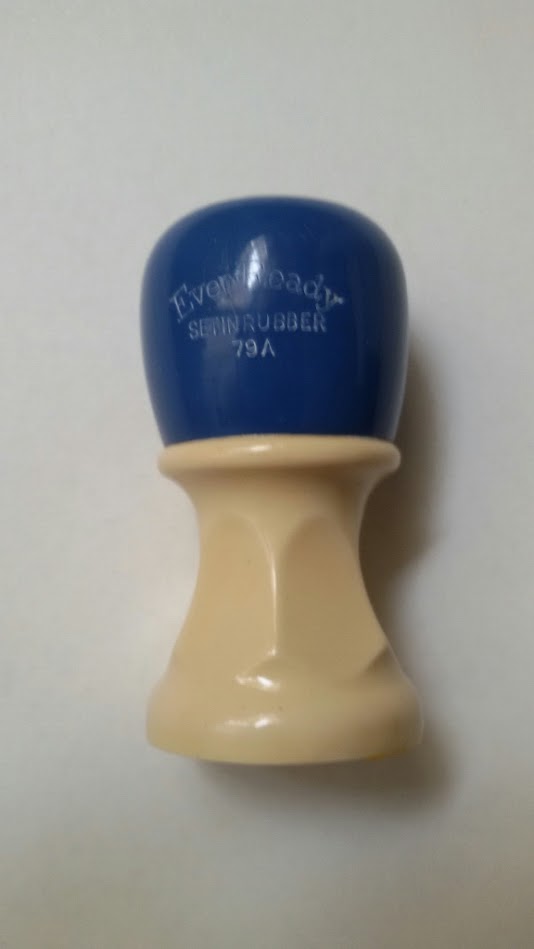
Last edited:
Would like to see the chart you've made did u upload it?
I just picked up my first shaving brush today at a local antique store. It is a Ever Ready 100T. I got it for $12. Seems like not too bad if a deal. I am excited to learn more about wet shaving. Anyone know what year these brushes were made?
Recientemente me encontré en una feria de antigüedades uno Everready 79A totalmente demolida y en un estado lamentable que cogió y lo envió a mi amigo Dulcamara, que me hizo trabajar restaurar gran pincel dejando y respetando toda su geometría.
Le pregunté a un nudo sintético y un fabuloso Muhle adapté a sus necesidades sin cambiar el diámetro interior de la brocha con la que hemos obtenido su forma original. cuelgo antes y después del procedimiento. Ahora restauré
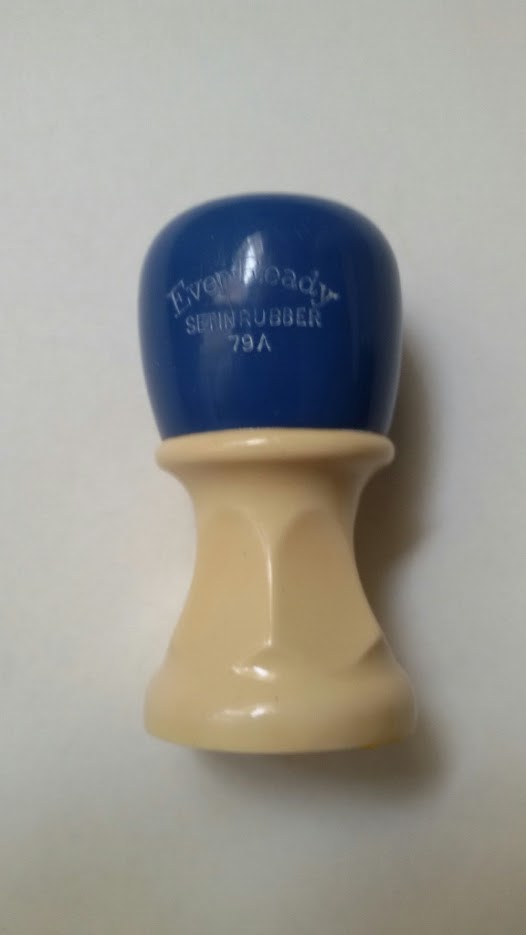
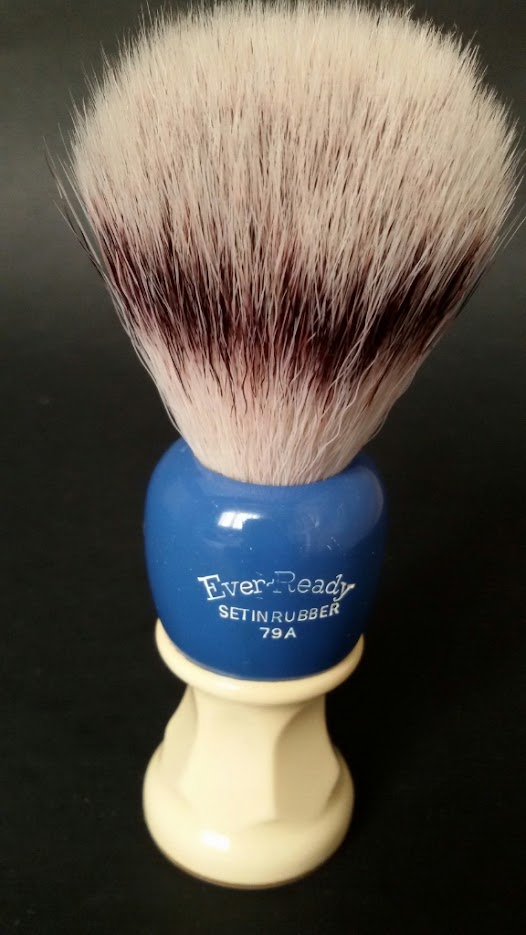
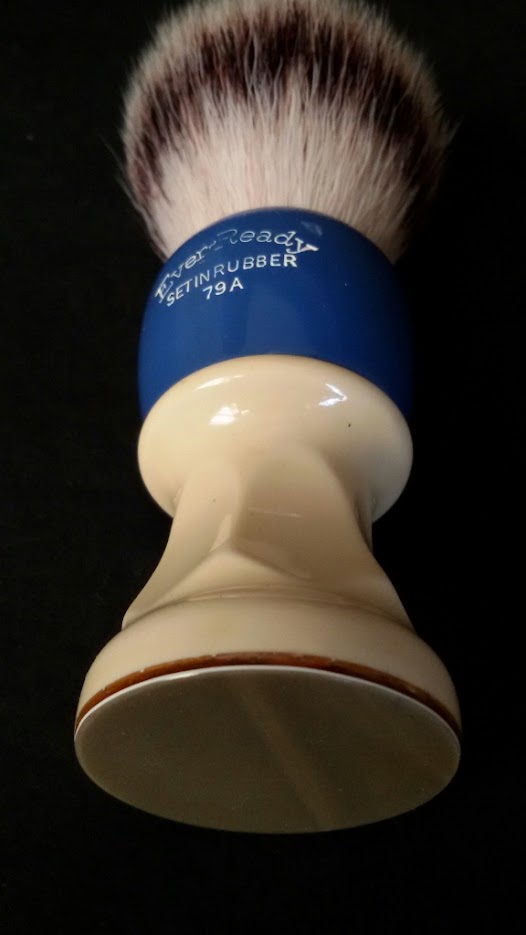
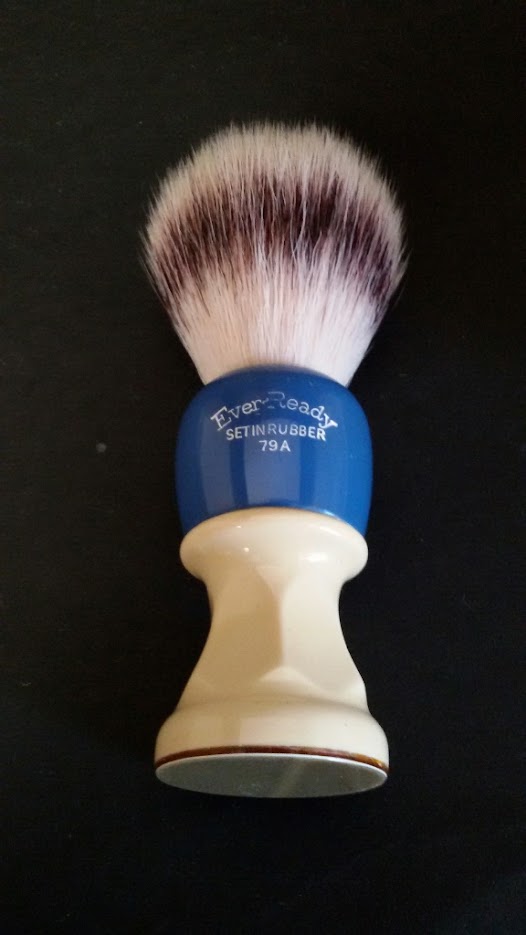
Le pregunté a un nudo sintético y un fabuloso Muhle adapté a sus necesidades sin cambiar el diámetro interior de la brocha con la que hemos obtenido su forma original. cuelgo antes y después del procedimiento. Ahora restauré
Last edited:
Similar threads
- Replies
- 103
- Views
- 7K
- Replies
- 6
- Views
- 732
- Replies
- 106
- Views
- 5K











